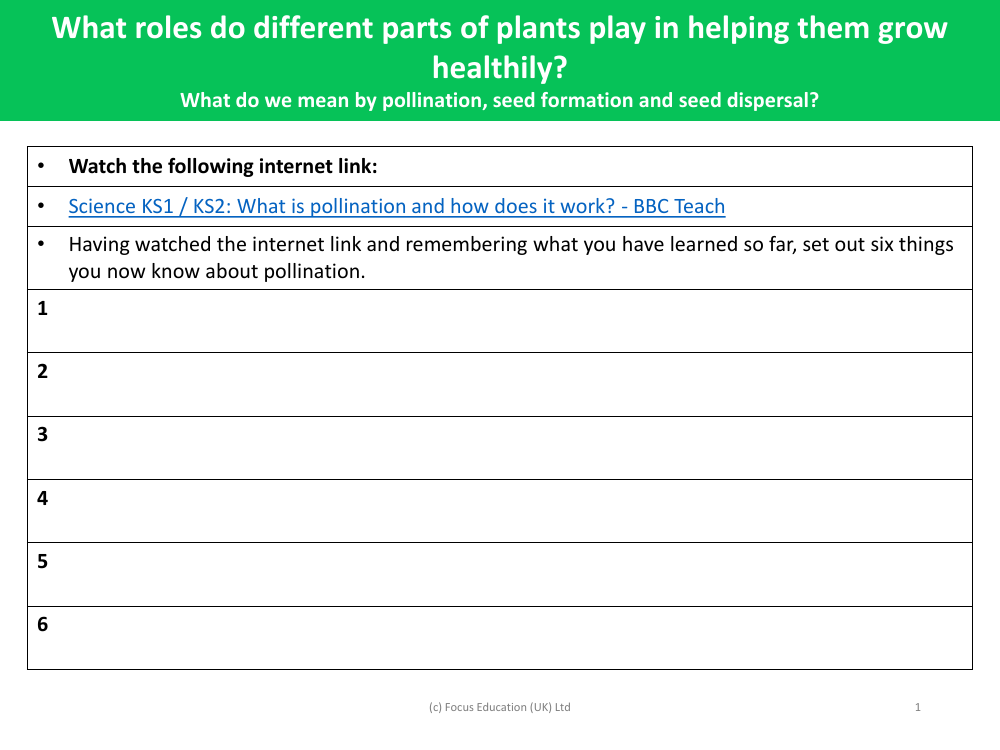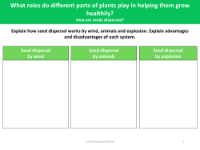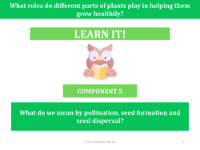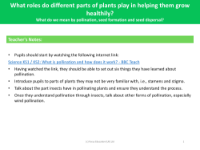What do you know about pollination? - worksheet

Science Resource Description
Pollination is a fundamental process in the life cycle of flowering plants and is crucial for the production of fruits and seeds. It involves the transfer of pollen from the male part of a flower, the anther, to the female part, the stigma. This can occur within the same flower, between flowers on the same plant, or between flowers on different plants. Pollination is often facilitated by pollinators such as bees, butterflies, birds, and other animals, which visit flowers to feed on nectar or pollen and inadvertently carry pollen from one flower to another.
Various parts of plants play specific roles in supporting healthy growth. The roots absorb water and nutrients from the soil, the stem provides support and transports water and nutrients between the roots and leaves, and the leaves are the primary site of photosynthesis, converting sunlight into energy. In the context of reproduction, the flower is the reproductive organ of the plant. Pollination leads to seed formation, where the fertilised ovule develops into a seed. Seed dispersal is the method by which seeds are spread from the parent plant to new locations, which can occur through various means such as wind, water, animals, or mechanical ejection. Understanding these processes is essential for appreciating the complexity of plant life and ecosystems.




